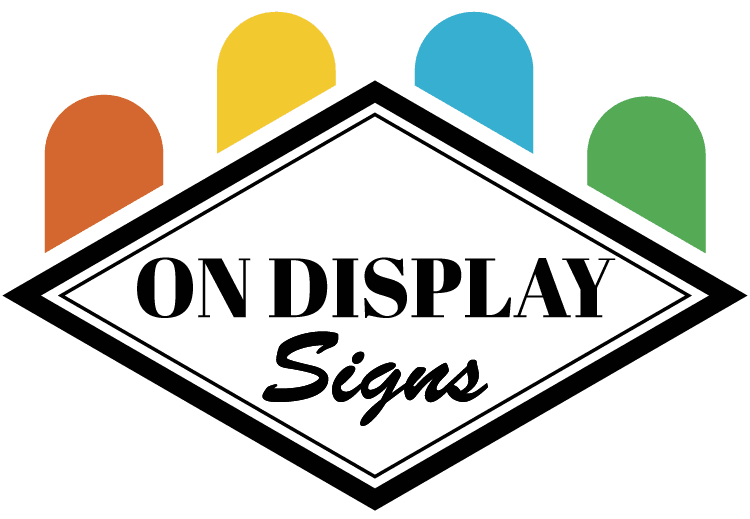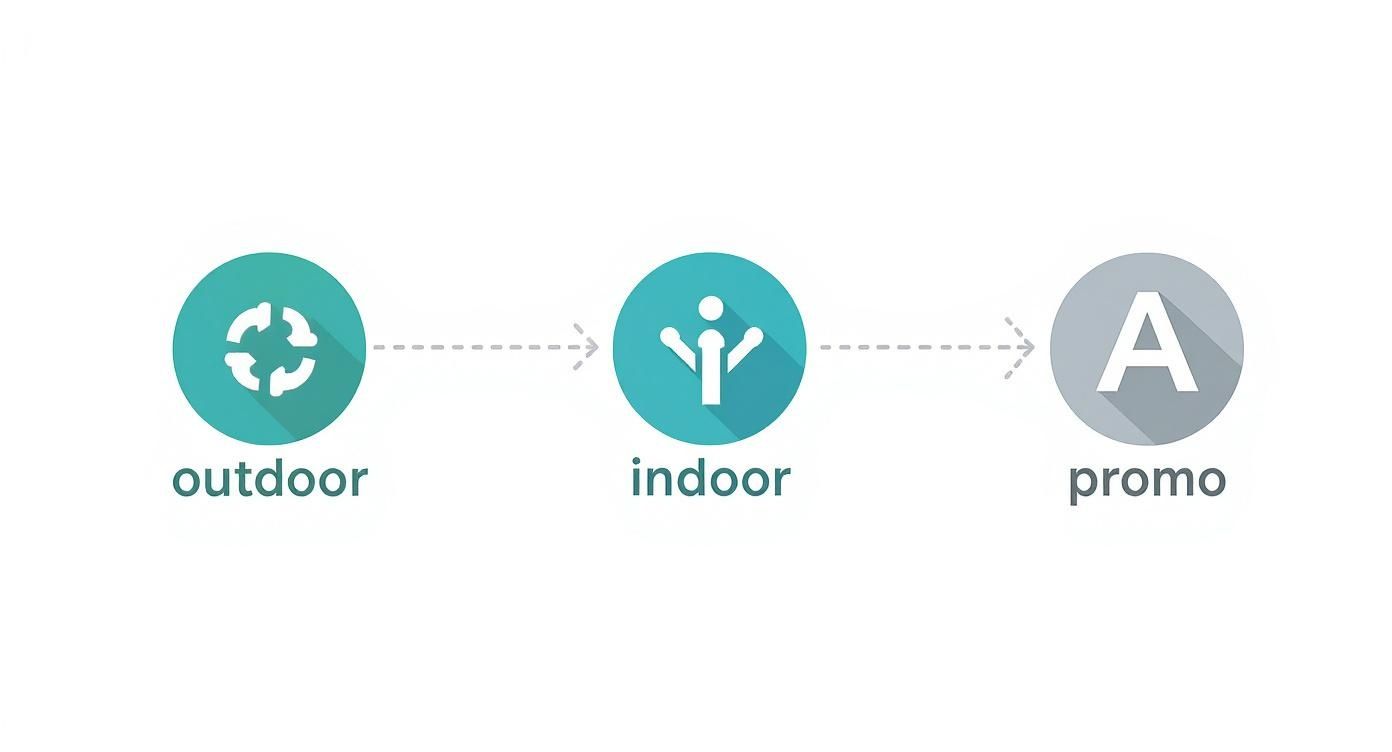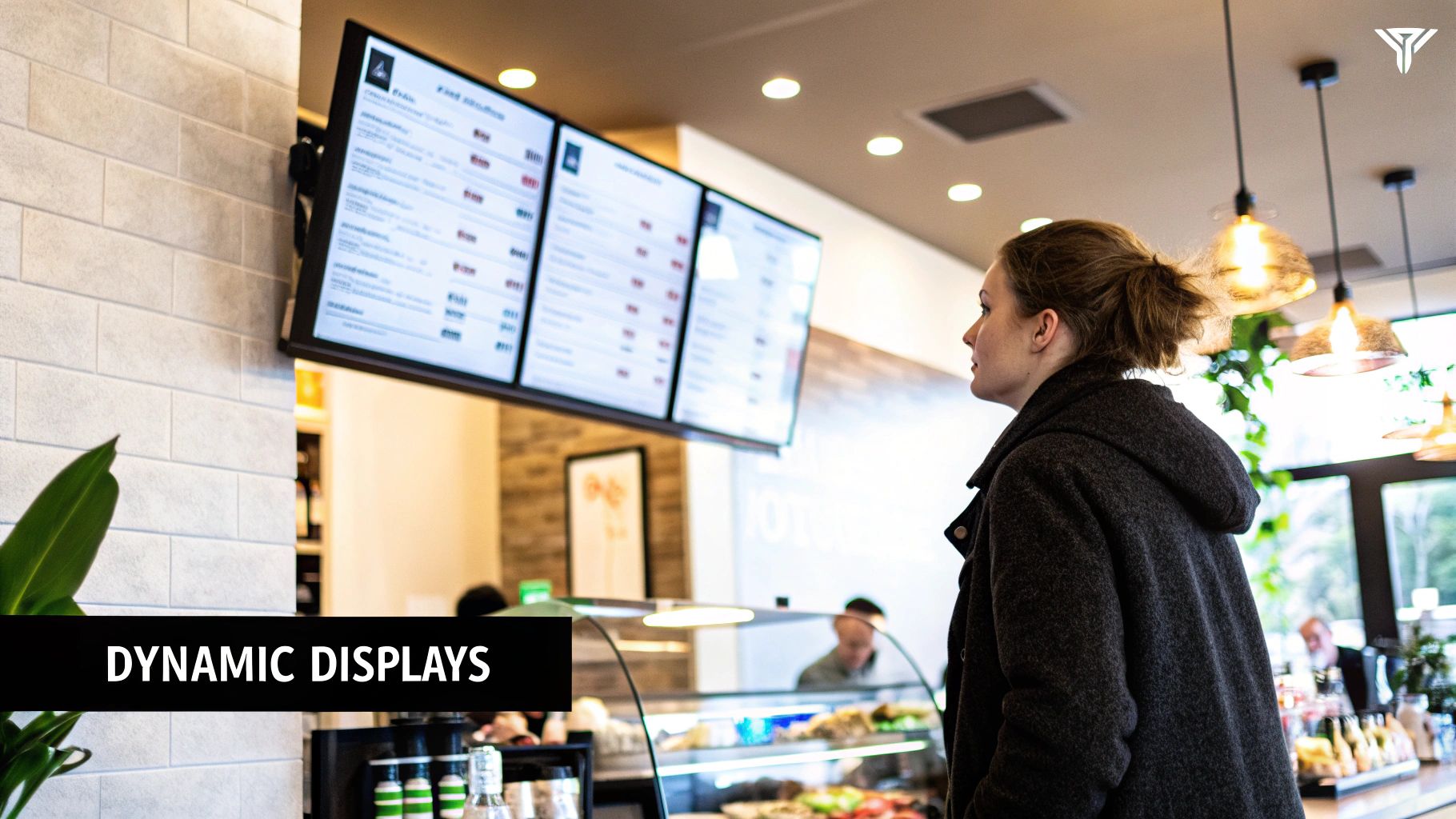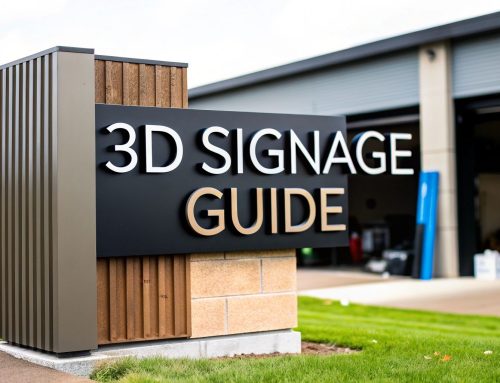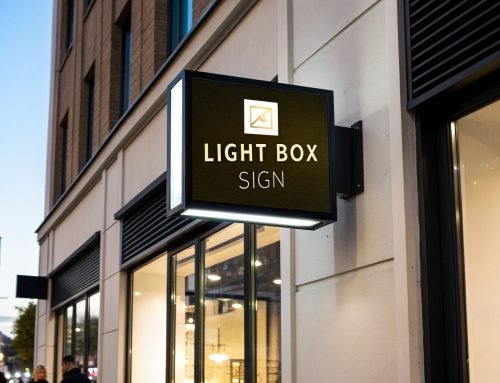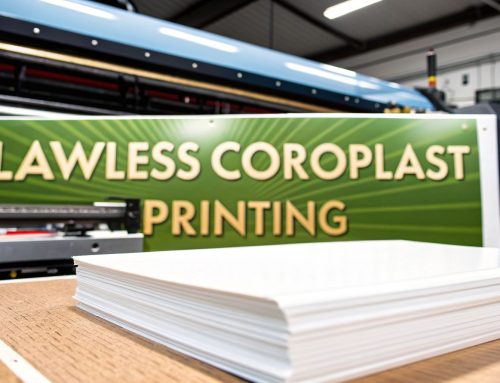Your storefront sign does more than dress up your façade; it’s a 24/7 brand ambassador that starts the conversation before you even open the door. Bold, well-crafted displays drive foot traffic and shape how people perceive your company from the street.
Effective Signage for Small Business isn’t just about looking good—it’s about working smart.
How Your Sign Becomes Your Silent Salesperson
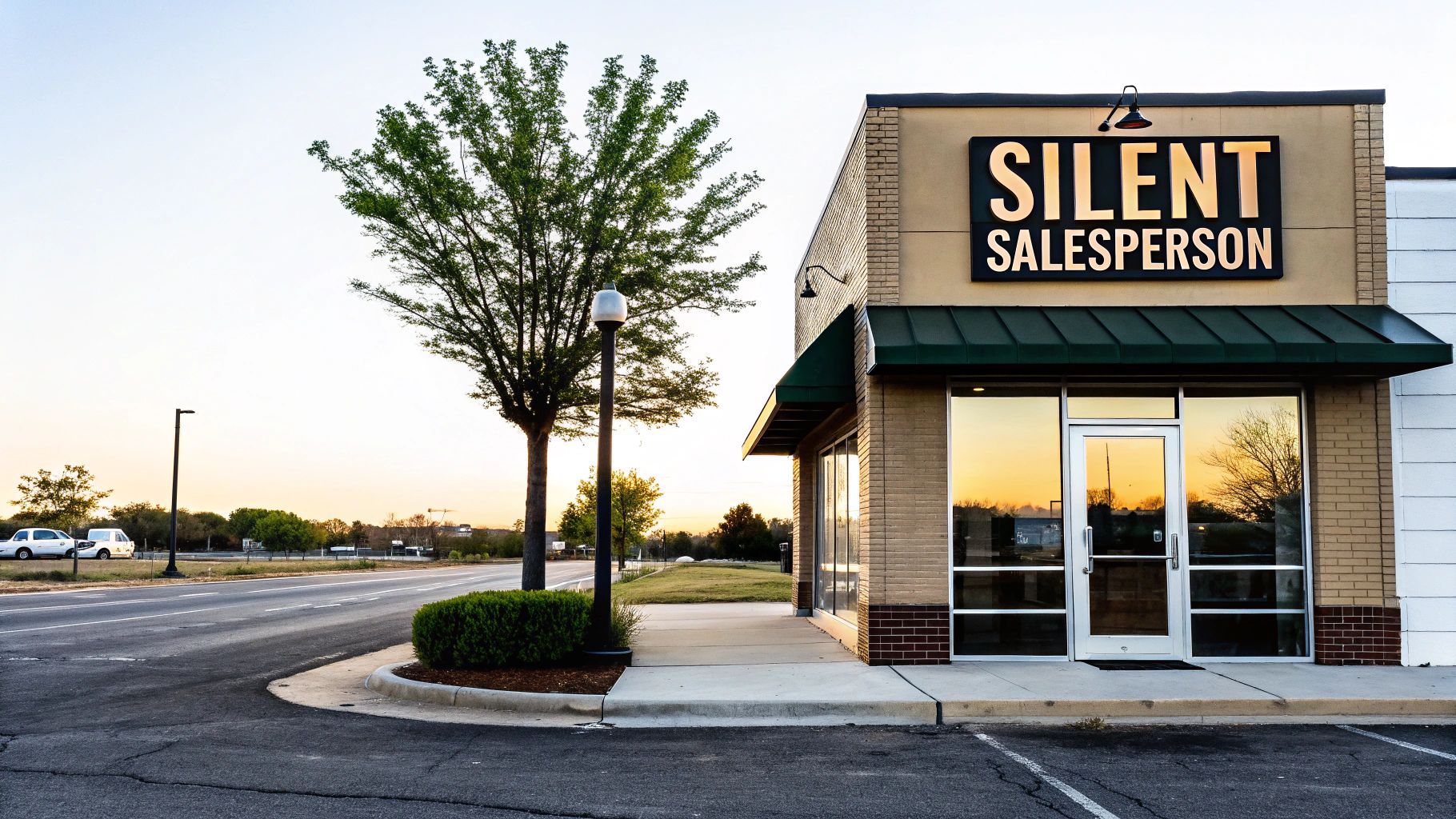
Think of your sign as the first handshake between your brand and the neighborhood.
It never clocks out: guiding visitors, sparking curiosity, even when the lights are off.
That consistency builds trust, showcasing your logo, colors, and message day in and day out.
- Bold Visual Presence helps you stand out on busy blocks
- Consistent Branding reinforces your identity at a glance
- Clear Messaging tells passersby exactly what you offer
Practical Example: A neighborhood bookshop with illuminated channel letters saw a 12% bump in evening stroll-ins within a month of installation.
Signs As First Impressions
First impressions happen in a heartbeat. A thoughtfully designed sign can convey quality in seconds and influence whether someone stops or keeps walking.
Key Insight A sign viewed for 5 seconds can determine a passerby’s perception of your business quality.
Treat your sign like a top salesperson: invest wisely in its design and materials, and it pays dividends every day.
- Durable Materials stand up to weather and wear
- High-Contrast Colors maximize readability at a glance
- Eye-Level Placement ensures nothing gets missed
You might be curious about taking your storefront to the next level with backlit elements. Check out our guide on light box outdoor signs for practical tips on installation and design.
This guide will walk you through choosing the right sign type, securing permits, and overseeing installation. Let’s dive into how each style supports specific goals and locations.
Making The Most Of Your Signage Investment
Think of your signage budget like the salary for your best salesperson—it should deliver a return every hour it’s on display.
- Targeted Messaging highlights promotions and new offerings
- Energy-Efficient Lighting keeps operating costs in check
- Modular Designs let you swap graphics for seasonal campaigns
Spending a bit more up front on quality components pays off by reducing repairs and replacements down the road. That way, your silent salesperson stays on the job for years.
In bustling districts, signs with movement or changing colors work like attention-grabbing callouts at a trade show. Even a subtle flicker of LED edges can pull eyes away from the crowd.
- Dynamic Elements capture high-traffic attention
- Seasonal Banners announce limited-time offers
- Crisp Graphics reinforce your brand story
Actionable Insight: Create a rotating monthly sign schedule—update your A-frame with weekly specials every Monday morning to keep content fresh.
Understanding these basics sets you up to pick a sign that fits your location and audience perfectly.
Pro Tip Look at nearby landmarks or busy storefronts to gauge the right scale and style for your sign.
With these insights in hand, your sign stops being just a display—it becomes a team member that never misses a shift.
Choosing the Right Sign for Your Location
Crafting effective signage starts with matching your sign’s form to its function and surroundings. Whether you’re vying for curb appeal or guiding guests down a hallway, the right choice makes all the difference.
Outdoor Sign Options
Outdoor signs act like your business’s handshake on the street—they introduce your brand from afar and pull people in, day or night.
- Channel Letters: Mounted directly on the storefront, these three-dimensional letters glow after sunset to keep your brand front and center.
- Monument Signs: Freestanding markers near driveways or walkways that add gravitas and visibility to your property.
- Lightbox Signs: Encased graphics backlit to deliver vivid, uniform illumination around the clock.
- Pylon Signs: Tall roadside pillars that alert drivers early to your location.
Practical Example: A hardware store on a busy highway installed a pylon sign with a digital panel displaying daily hours, increasing drive-by traffic by 10%.
Indoor Sign Choices
Inside, your signs should feel like a natural part of the décor while steering visitors where they need to go.
Key Insight Wayfinding signs can cut errant customer paths by up to 50%, smoothing flow and improving experience.
For special promotions, consider A-frames and banners. A café near the pickup counter, for instance, could use a bright banner to highlight a limited-time latte flavor.
Quick Guide To Common Sign Types
Here’s a snapshot of popular sign styles, where to place them, and why they work. Use this as a cheat sheet when planning your next signage upgrade.
| Sign Type | Primary Location | Best For | Key Benefit |
|---|---|---|---|
| Channel Letters | Outdoor storefront | High visibility branding | 24/7 illuminated presence |
| Monument Sign | Property entrance | Professional or formal branding | Lasting credibility and impact |
| Wayfinding Sign | Indoor corridors | Visitor navigation | Improved accessibility |
| A-Frame Banner | Sidewalk or interior | Promotions and special offers | Flexible placement and mobility |
Actionable Insight: Keep a printed copy of this table in your office for quick reference during supplier calls.
Check out our guide on common outdoor sign types to learn more about selecting materials and styles that last.
Matching Sign Materials And Durability
The material you pick directly impacts cost, maintenance, and lifespan. Aluminum stands up to the elements, acrylic offers a polished finish, and HDU foam brings lightweight versatility.
Practical Example: A coastal café chose marine-grade aluminum for its sign to resist salt air, cutting maintenance by half.
Selecting Based On Visibility And Scale
Size and placement are crucial. Large, bold letters catch car headlights on busy roads, while smaller plaques keep aisles clear indoors.
- Choose materials that resist local weather and UV damage.
- Factor in mounting height so text remains legible at different distances.
- Adjust lighting setups to maintain visibility after dusk.
Tips For Coordinating Outdoor And Indoor Signs
Consistency is king. When exterior and interior elements share fonts, colors, and finishes, your brand feels cohesive from curb to counter.
- Match border styles between outdoor panels and indoor wayfinding.
- Use the same accent hue on banners and channel letters.
- Keep your messaging hierarchy linked from street-facing signs to interior graphics.
Analyzing Traffic Flow And Sign Placement
Effective placement starts with simple observation. Notice where people gather, pause, or pass, then position signs to intercept them at those moments.
- Track average foot traffic during peak hours.
- Identify spots near seating areas or queue lines.
- Align sign messages with customer flow peaks to maximize engagement.
Actionable Step: Spend a day with a clicker to count foot traffic near your entrance at different times, then adjust sign positions accordingly.
Case Study Examples
A neighborhood bakery installed illuminated channel letters above its shop and saw a 25% rise in evening foot traffic. Meanwhile, clear ADA wayfinding plaques reduced customer confusion during rush times.
At a local spa, combining a stone monument sign at the parking lot entrance with indoor banners announcing new treatments boosted inquiries by 18%.
Next Steps For Your Sign Project
Map out potential sign sites on a photo or floor plan. Then, consult a signage partner who can help navigate permits, material choices, and installation schedules.
Use the table and tips above to zero in on the right mix of sign types. And don’t forget to verify zoning rules to avoid unexpected hold-ups.
Designing A Sign That Actually Converts
A sign should be more than a nameplate. It needs to tell a story and spark action in a glance.
Great designs stick to the five-second rule: someone should digest your message before they walk past.
Consistency with your brand colors and fonts builds credibility. In turn, that trust transforms a static panel into an active marketing engine.
- Pick bold, clean typefaces that read easily from afar
- Stick to a tight color palette with strong contrast
- Keep your headline short so it never overwhelms
Practical Example: A florist switched to a bold sans-serif font and saw a 15% rise in first-time visitors within two weeks.
Readability For Quick Glance
Imagine your sign as a highway billboard—every letter must land clearly in a split second.
That means generous letter spacing and clear shapes. You might like this guide on selecting fonts for metal signs for concrete examples.
Don’t forget the rule of thumb: 1" of letter height for every 10' of viewing distance.
Using Contrast To Own Attention
Contrast slices through visual noise. A dark font on a pale background—or the reverse—jumps forward.
Skip busy patterns behind your text. Instead:
- Pair complementary colors like charcoal and lime
- Test readability at dawn, midday, and dusk
- Use subtle textures only outside the text area
Designing For Simplicity
Simplicity is about focus, not emptiness. Remove anything that pulls eyes away from your message.
Limit yourself to one clear call to action. Here’s a quick workflow:
- Pinpoint your single headline
- Strip away every detail that isn’t essential
- Confirm your designer can replicate this across all materials
This infographic breaks down three sign styles: outdoor channel letters, indoor wayfinding, and sidewalk A-frames, each built on a clean, focused layout.
Building Brand Trust Through Consistency
Every sign you install should echo your visual identity. Matching swatches, type styles, and layouts feels professional—and familiar.
When your store letters match your website font, customers recognize you faster. That recognition cements memory and trust.
Beyond design, tracking performance is key. Dive into measuring advertising effectiveness to learn how to capture your signage ROI.
- Audit all current signage against your brand style guide to identify mismatches.
- Update any colors or fonts that fall outside your brand palette.
- Schedule quarterly signage reviews to maintain consistency.
Key Takeaway A well-designed sign can increase walk-in traffic by over 20% when readability and contrast are dialed in.
Armed with these ideas, your new sign won’t just decorate a wall—it will start selling.
Testing And Refinement
Once your sign is up, watch how people interact. Do they pause or keep moving?
Small tweaks can make a big difference:
- Count daily visitors before and after changes
- Ask new customers, “How did you hear about us?” at the door
- Monitor social media chatter if you include a QR code or hashtag
Practical Example: A bakery timed morning crowd flow and added a “Fresh Breads 9am–11am” banner to match peak hours, boosting mid-morning sales by 10%.
Don’t forget to test at low light. If your message fades at dusk, adjust your illumination or palette. Ongoing checks keep your sign performing at its peak.
Refine your sign for maximum impact.
Exploring Digital Signage for Your Business
Think of digital signage as a blank canvas that updates itself whenever you want. You swap out printed flyers for on-screen messages that shift in seconds—no ink, no wait.
A cozy café might swap its breakfast specials for lunch combos at midday. Meanwhile, a boutique could loop a 15-second teaser of its newest arrivals, grabbing attention without lifting a finger.
Key Insight Fresh, real-time content keeps customers curious and engaged.
- A restaurant flips through daily specials with a quick tap.
- A retail store plays short demos in the window.
- A gym shows live class occupancy and upcoming slots.
Key Benefits Of Digital Signage
By scheduling promotions for lunch rush or evening crowds, you hit customers when they’re most likely to buy. You also cut printing costs—updates happen as fast as you can click “publish.”
The world market for this technology already sits at USD 28.5 billion. Experts forecast it will swell to USD 45.94 billion by 2030, growing at an 8.1% CAGR between 2025 and 2030. Learn more about market growth
- Create a weekly content calendar to keep messages fresh.
- Segment displays for first-time visitors versus regulars.
- Drop in video clips during peak foot traffic to catch wandering eyes.
Getting Started With Digital Displays
Begin by matching screens to their surroundings—high-sunlight areas need extra-bright panels, while indoor spots can use sleek, slimmer displays. Next, pick a content management system that lets you push updates remotely. Finally, bring in an installer who knows local codes and proper wiring.
- Test each screen outdoors at midday to check glare.
- Choose commercial-grade monitors built for 24/7 operation.
- Secure displays with tamper-resistant mounts for added safety.
Practical Example: A gym installed a high-brightness panel in the lobby displaying class schedules and saw a 20% drop in member queries about class availability.
For a deeper dive into hardware selection and installation best practices, check out our guide: Guide to Digital Sign LED
Real-time control means you can roll out a flash sale, measure customer reaction, and tweak your offer—all in under an hour.
Pro Tip: Treat your digital display like an extension of your social feed—refresh it just as often.
Real World Applications
- A café pairs smooth jazz with a high-contrast menu to calm the morning rush.
- A boutique loops short lifestyle clips to spark browsing.
- A fitness studio shares live class occupancy to streamline check-ins.
Sketch out your weekly message slots, then team up with a signage pro to map out screen locations and network hookups.
Final Thought: Consistent updates turn your sign into a living asset—keep measuring and refining.
Navigating Permits And Professional Installation
Getting your sign from concept to reality often hinges on navigating local permits. Think of permits as the official green light—you skip them at your own risk.
This walkthrough peels back the curtain on real application forms and on-site inspections, so you’ll know exactly what to expect.
Understanding Local Sign Regulations
Every town has its own playbook for outdoor signs. These rules keep your neighbors safe and your streetscape looking cohesive.
Common code elements include:
- Sign Area Limits by zoning district
- Approved Mounting Methods and material fire ratings
- Illumination Intensity and timer restrictions
- Required Setbacks from property lines
Tackling these standards at the start means fewer surprises when it’s time to install.
Preparing Your Permit Application
First, visit your city or county website to download the official sign code and permit packet. You’ll typically find fillable PDFs, checklists, and sample diagrams.
A complete application usually contains:
| Requirement | Details Needed |
|---|---|
| Site Plan | Scaled drawing showing sign placement |
| Elevation Diagram | Sketch of sign height, width, and mounting |
| Material Specs | Manufacturer data sheets or sample swatches |
| Electrical Diagrams | Wiring layout with load calculations |
| Illumination Plan | Light source types and photometric data |
Gathering these pieces takes about 1–2 weeks, while reviews often run 2–6 weeks.
Actionable Step: Download your municipality’s sign permit checklist within 24 hours of starting your project to stay ahead of deadlines.
Working with a skilled sign partner can often cut permit time in half.
Common Permit Challenges
Even a spotless application can hit a snag. Inspectors might flag missing engineer stamps or drawings that aren’t to scale.
To keep things moving:
- Confirm every form has signatures and dates
- Include direct contact info for your project lead
- Verify drawings use clear metric or imperial scales
- Request a written summary of fees and inspection steps
A quick internal audit before you submit can save days of back-and-forth.
Hiring Professional Installers
Hanging a commercial sign is more than drilling holes and flipping a switch. Pros bring certified electricians, proper lifts, and intimate code knowledge.
Key benefits of hiring a pro:
- Certified Electricians handle all wiring and permits
- Trained Crews use the right anchors and safety gear
- Warranty Protection remains intact
- Insurance Coverage shields you from on-site risks
Aim for a partner who manages permit paperwork, interprets local codes, oversees inspections, and plans long-term maintenance.
Check out our guide on sign permit requirements for deeper insights and state-by-state tips: Learn more about permit steps in our article
Installation Best Practices
Think of your mount points like a building’s foundation—they must be rock solid. In high-wind areas, stainless steel studs and reinforced anchors are non-negotiable.
Here’s a quick checklist:
- Apply weatherproof sealant at every mounting point
- Test each light circuit before sealing enclosures
- Conduct a final walk-through to confirm code compliance
- Archive digital copies of permits and inspection reports
Practical Example: A retail store sealed mounts with UV-resistant caulk to avoid water intrusion, extending sign life by 3 years.
A precise install safeguards your investment and maximizes your ROI for years.
Maintaining Compliance Over Time
Most permits expire after 1–3 Years, and renewals often mean fresh inspections or fees. A simple calendar reminder can prevent last-minute rushes.
Keep on top of:
- Permit expiration dates in your business calendar
- Annual inspections for illuminated signs
- Organized files of approvals and inspection reports
- Updated permits whenever you change size or lighting
Staying proactive avoids fines and keeps your sign working as your silent salesperson.
Budgeting for Your Signage Investment
Before you start sketching designs, treat your sign budget like planting a garden. Every choice—from materials to lighting—drives growth and foot traffic. A few extra dollars today can save hundreds on repairs down the road.
Take materials for example. Swapping vinyl for aluminum might add a modest upcharge, but it often lasts years longer. These upfront costs can turn into maintenance savings over time.
Practical Example: A boutique reused mounting hardware from a former sign, saving 15% on installation costs and cutting setup time in half.
To build a realistic budget, split your costs into clear categories:
- Materials dictate lifespan and upkeep. Outdoor signs thrive on metals like aluminum or acrylic.
- Size controls visibility and fabrication fees. Bigger signs grab eyes—and raise the price.
- Illumination spans from simple LED strips to fully backlit panels.
- Design Complexity covers custom shapes, colors, and finishes that can add labor hours.
Understanding each piece makes quotes more transparent and guards against sticker shock.
Estimating Sign Costs
| Sign Type | Typical Cost Range | Key Benefit |
|---|---|---|
| Channel Letters | $2,500–$10,000 | Standout glow after dark |
| Monument Sign | $5,000–$15,000 | Enduring curb appeal |
| Lightbox Sign | $1,200–$6,000 | Even illumination |
| Banner or A-Frame | $200–$800 | Quick, flexible messaging |
These figures shift based on your location and permit expenses, but they offer a solid starting point.
- Compare quotes from at least three vendors.
- Double-check what’s in the package—permits, installation, warranties.
- Ask about payment plans or financing to smooth out cash flow.
Calculating Return On Investment
When you track ROI, your sign becomes more than décor—it becomes a revenue driver. A neighborhood café, for instance, might enjoy a 15% bump in morning walk-ins after adding illuminated channel letters.
Key Insight Signs typically pull their weight for 5–10 years with minimal upkeep.
Measure impact with simple tactics: door-count surveys, foot traffic tallies, or sales comparisons.
- Ask patrons how they heard about you.
- Record average visitors before and after your sign goes up.
- Check sales spikes during special promotions tied to fresh signage.
Actionable Insight: Set quarterly reviews to compare signage spend against sales lift—focus on high-ROI sign types for future projects.
Next Steps To Optimize Budget
Consider spreading your project into phases or exploring financing to protect your cash reserves. Always lock in permit details before placing your order.
- Review past projects to spot cost-saving techniques.
- Inquire about bulk rates for multi-location rollouts.
- Build in a maintenance buffer to cover future upkeep.
- Schedule permit checks and log fees in your budgeting sheet.
A detailed plan keeps surprises at bay and smooths the path to installation success. Then, measure monthly sales against your signage spend to fine-tune your strategy each quarter.
A well-crafted budget turns your sign into a silent salesperson, performing nonstop.
Thoughtful investment in signage pays dividends in visibility and brand strength. By following this guide, you’ll see exactly what it costs and how quickly your new sign can pay for itself. Next, partner with On Display Signs for transparent pricing and expert support.
Start mapping your budget with a clear spreadsheet today.
Frequently Asked Questions About Business Signage
Navigating sign options can feel overwhelming. We’ve pulled together the most common questions from small business owners, backed by straightforward answers you can act on right away.
What Is The Most Durable Material For An Outdoor Sign
When you picture a sign standing up to sun, rain, and wind, imagine aluminum as your reliable workhorse. It doesn’t rust, and a powder-coated finish locks in vibrant color for years. If you want the warmth of wood without the worry of rot, consider High-Density Urethane (HDU) foam—it’s waterproof yet mimics natural grain. And for signs that glow evenly at night, acrylic or polycarbonate panels are the go-to; they’re tough and distribute light beautifully.
Key Takeaway Choose materials based on climate challenges, budget realities, and the look you’re after to extend your sign’s lifespan.
How Long Does It Take To Get A New Business Sign
From the moment you sketch your logo to the day your sign lights up, plan on about 4 to 8 weeks. Here’s how it breaks down:
- Design & Approval (1–2 weeks)
- Permit Application & Review (2–4 weeks)
- Fabrication & Installation (1–2 weeks)
In practice, that means if you’re eyeing a grand opening or seasonal sale, start the process early. Even a few extra days can avoid a last-minute scramble.
Can I Install My Own Sign To Save Money
Tacking up a banner or lining a window with decals? Go ahead DIY. But once you step outside or add illumination, hire a pro. A misaligned exterior sign can damage your facade, void warranties, or worse—create safety hazards.
- Certified electricians keep you up to code
- Quality anchors and sealants fend off weather
- Skilled crews bring the right lifts and safety gear
Investing in professional installation protects your brand and saves headaches later.
How Much Should A Small Business Budget For A Sign
Sign prices vary by size, style, and lighting. Use this as a ballpark:
| Sign Type | Cost Range | Best For |
|---|---|---|
| Channel Letters | $2,500–$10,000 | A branded glow after dusk |
| Monument Signs | $5,000–$15,000 | Instant curb appeal |
| Lightbox Signs | $1,200–$6,000 | Consistent, bright illumination |
| Banners or A-Frames | $200–$800 | Short-term promos inside or out |
Think of a sign as a marketing tool, not just a cost. In many cases, extra foot traffic pays for itself in a matter of months.
Next Steps For Your Sign Rollout
- Identify prime sign locations and take accurate measurements.
- Talk with a signage specialist to match materials, size, and design to your brand identity.
- Ask for a detailed quote that includes permits, fabrication, and installation.
Sticking to these steps keeps your project on track and on budget.
Pro Tip Kick off your signage work at least two months before any major launch.
These FAQs should wipe away the toughest questions and give you the confidence to move forward.
Ready to boost your storefront’s impact? Partner with On Display Signs, Inc. for full-service support—from concept to install.
